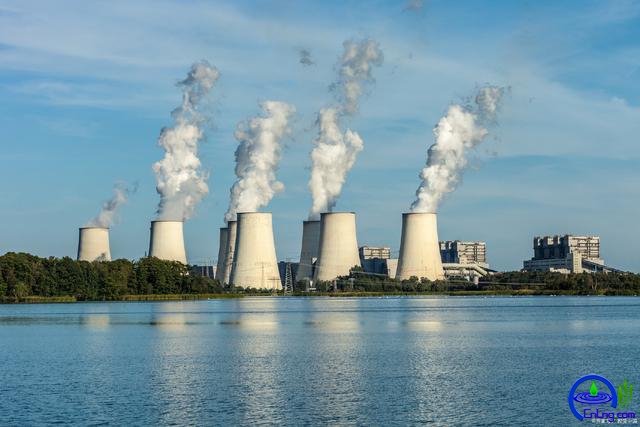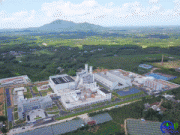免职声明:本网站为公益性网站,部分信息来自网络,如果涉及贵网站的知识产权,请及时反馈,我们承诺第一时间删除!
This website is a public welfare website, part of the information from the Internet, if it involves the intellectual property rights of your website, please timely feedback, we promise to delete the first time.
电话Tel: 19550540085: QQ号: 929496072 or 邮箱Email: Lng@vip.qq.com
摘要:据《报告》统计,“十四五”以来,全国新增煤炭产能6亿吨/年左右。全国原煤产量分别于2021年、2022年跃上41亿吨、45亿吨台阶,2023年达到47.1亿吨,年均增长4.5%;原煤占我国一次能源生产总量的比重始终保持在65%以上。2023年煤炭进口量达到4.74亿吨,比2020年增加1...
|
据《报告》统计,“十四五”以来,全国新增煤炭产能6亿吨/年左右。全国原煤产量分别于2021年、2022年跃上41亿吨、45亿吨台阶,2023年达到47.1亿吨,年均增长4.5%;原煤占我国一次能源生产总量的比重始终保持在65%以上。2023年煤炭进口量达到4.74亿吨,比2020年增加1.7亿吨。煤炭的安全稳定供应有力地支撑了我国经济社会平稳健康发展,特别是在防范应对低温雨雪冰冻灾害和抗震救灾中,煤炭行业践行“国之大者”,全力以赴做好煤炭增产保供工作,以煤炭的“稳”和“增”为全国能源安全稳定供应作出了重要贡献。
作为我国煤炭主要产地,晋陕蒙新四省区原煤产量38.3亿吨,占全国的81.3%,比2020年增加7.78亿吨。陕西、内蒙古、山西原煤产量分别在7亿吨、12亿吨、13亿吨的台阶上再创新高;新疆加快释放煤炭先进产能,煤炭产量较2020年增长近2亿吨,“疆煤外运”突破1亿吨,已经成为全国煤炭供应的新增长极。榆林、鄂尔多斯原煤产量分别突破6亿吨、8亿吨大关,两市原煤产量占全国的比重提高到30.2%。山西、蒙西、蒙东、陕北和新疆五大煤炭供应保障基地建设加快推进,煤炭与新能源、新材料产业链协同发展持续深化,煤矿先进产能加快释放,煤炭输送通道体系日益完备,全国煤炭资源配置能力显著增强。 According to the "Report" statistics, since the "14th Five-Year Plan", the country has added about 600 million tons of coal production capacity/year. The country's raw coal output will jump to 4.1 billion tons in 2021 and 4.5 billion tons in 2022, and reach 4.71 billion tons in 2023, with an average annual growth rate of 4.5%. The proportion of raw coal in China's total primary energy production has always remained above 65%. Coal imports will reach 474 million tons in 2023, 170 million tons more than in 2020. The safe and stable supply of coal has strongly supported the stable and healthy development of China's economy and society, especially in the prevention and response to low-temperature rain and snow freezing disasters and earthquake relief, the coal industry has practiced "the country's largest", and has gone all out to do a good job of coal production and supply, and has made important contributions to the national energy security and stable supply with the "stability" and "increase" of coal. At the same time, the distribution of coal production and development has been continuously optimized, and the coordinated development pattern of the East, Central and West regions has been formed at a faster pace. Since the 14th Five-Year Plan, raw coal production in the central region has increased from 1.31 billion tons to 1.60 billion tons, accounting for an increase of 0.5% in the national proportion. Raw coal production in western China increased from 2.32 billion tons to 2.85 billion tons, accounting for an increase of 1.2%. Raw coal production in the eastern region decreased by 30.49 million tons, accounting for a decrease of 1.4%; Raw coal production in Northeast China fell by 9.78 million tons, or 0.2%. In 2023, there will be seven provinces (autonomous regions) with raw coal output exceeding 100 million tons, one less than in 2020, and raw coal output of 4.18 billion tons, accounting for 88.7% of the country. As the main coal producing area in China, the raw coal output of Jinshaanxi-Mongolia-Xinxin province is 3.83 billion tons, accounting for 81.3% of the country's total, an increase of 778 million tons over 2020. Raw coal production in Shaanxi, Inner Mongolia and Shanxi reached new highs of 700 million tons, 1.2 billion tons and 1.3 billion tons respectively. Xinjiang accelerated the release of advanced coal production capacity, coal output increased by nearly 200 million tons compared with 2020, and "Xinjiang coal export" exceeded 100 million tons, which has become a new growth pole of national coal supply. The raw coal production of Yulin and Ordos exceeded 600 million tons and 800 million tons respectively, and the raw coal production of the two cities accounted for 30.2% of the country. The construction of five major coal supply bases in Shanxi, Western Mongolia, Eastern Mongolia, Northern Shaanxi and Xinjiang accelerated, the coordinated development of the industrial chain of coal, new energy and new materials continued to deepen, the release of advanced coal production capacity accelerated, the system of coal transportation channels became increasingly complete, and the country's capacity for allocating coal resources significantly improved. |




 同时,煤炭生产开发布局持续优化,东中西区域协同发展格局加快形成。“十四五”以来,中部地区原煤产量由13.1亿吨增至16.0亿吨,占全国的比重增加0.5%;西部地区原煤产量由23.2亿吨增至28.5亿吨,占比增加1.2%;东部地区原煤产量下降3049万吨,占比下降1.4%;东北地区原煤产量下降978万吨,占比下降0.2%。2023年,原煤产量超亿吨的省(区)共有7个,比2020年減少1个,原煤产量41.8亿吨,占全国的88.7%。
同时,煤炭生产开发布局持续优化,东中西区域协同发展格局加快形成。“十四五”以来,中部地区原煤产量由13.1亿吨增至16.0亿吨,占全国的比重增加0.5%;西部地区原煤产量由23.2亿吨增至28.5亿吨,占比增加1.2%;东部地区原煤产量下降3049万吨,占比下降1.4%;东北地区原煤产量下降978万吨,占比下降0.2%。2023年,原煤产量超亿吨的省(区)共有7个,比2020年減少1个,原煤产量41.8亿吨,占全国的88.7%。












